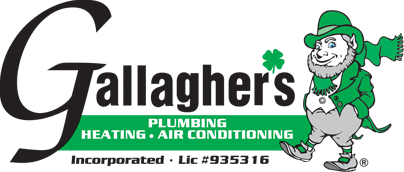
Every spring and fall, Sacramento residents should clean their air conditioner’s coils. This includes removing fallen debris, cleaning dust, and removing pollen buildup. Cleaning your air conditioner is important. However, you may wonder if using a pressure washer on your AC unit is safe.
Why You Should Never Power Wash Your AC Unit
Let’s admit it, using a power washer can be fun. However, when it comes to cleaning your AC unit, it can also be hazardous. Power washers or pressure washers create thousands of PSI of water pressure.
Most people are surprised by how powerful these machines can be. They only recognize it once what they’re trying to clean has been destroyed.
Look at the coil fins of your air conditioner’s air handler. You will see that they are made of thin metal, usually aluminum or copper. Aluminum and copper are highly malleable.
When exposed to high pressure, they can quickly flatten or bend. Too much water pressure can crush the coils, rendering them useless.
A garden hose exerts less pressure but does not have sufficient force actually clean out your AC. So it’s not an effective way to clean your AC unit.
Sadly, we have seen some badly damaged Air Conditioners from power washing. Replacing AC coils can be extremely expensive, depending on the repaired unit. Verdict: don’t use a pressure washer on your AC unit. The following tips may be beneficial to help you keep your air conditioner’s external condenser unit clean without damaging it.
Understanding the Difference Between the Evaporator and Condenser Coils
Before starting a project cleaning your AC unit, you should know a little about how the system works. Your AC unit has indoor and outdoor components, which both have their own coil.
Inside, your evaporator coil is what removes heat from the air. Within the coil, the refrigerant absorbs heat, which causes it to evaporate. Your air conditioner then moves it outside.
The refrigerant transfers the warm air outside and then travels through the compressor to the condenser coils. The condensers transform the refrigerant into a liquid. With the help of an exhaust fan, the condenser coil releases the heat outside.
To properly clean your AC unit, you must clean its indoor and outdoor components. We would recommend getting help from a professional. Our experts can properly clean your unit, as well as perform important maintenance. That being said, read on to learn how to clean an air conditioner yourself.
Cleaning Your Air Conditioner’s Indoor Unit
Start by turning off the power to the AC unit. Remember, an air conditioner has a ton of moving electrical parts. Throughout the cleaning process, your safety is paramount. You can switch off the power at the breaker box or disconnect the unit from the energy source.
Open up the AC unit. The blower unit should have a door leading to the evaporator coil. The next step depends on what type of AC unit you have. You may need to remove the foil duct tape and a few bolts or screws to access the coil.
Clean the evaporator coil using a soft brush to remove dust. The easiest cleaning solution is a no-rinse coil cleaner from a hardware store. Spray the foam on the coil.
On its own, it will drip into the unit drain pan, removing any dust and debris. It’s preferable to do this on a warm day. When you turn the unit back on, the AC will build up condensation, rinsing off the coils.
Once the cleaner has completed its job, clean the AC drain pan. Typically, soap and hot water are all that you need. Pour some of the mixture down the drain to ensure that it is clear. If you notice algae problems, look for drain pan tablets to help clear it out.
Now, examine the drain, and clear it if it is plugged. Without regular maintenance and cleaning, mold and algae can build up in the drain. The drain is typically a one-inch PVC pipe, so it can quickly clog.
Finally, close the access panel by reattaching the same screws you removed at the beginning. Don’t forget to use HVAC metal tape to seal the top and bottom of the access panel.
Cleaning Your Outside Unit
Cleaning the condenser coils is a little bit more labor-intensive. Your condenser is outdoors, so of course it builds up more dirt and grime. You may need special equipment to clean the condenser coil properly.
Start by ensuring that the power is off. Remove the sheet metal screws from the top of the unit. Remove the fan unit and grille.
Now, remove any debris that has accumulated on the bottom of the air conditioner. You will probably see that leaves, twigs, and seeds have been collected in the unit.
Clean the air conditioner’s fins and coils. Purchase a coil cleaning solution and use it following the manufacturer’s recommendation. Do not use a power washer for this chore. The fins are delicate, and power washing them can permanently damage them.
Clean around the AC unit, replace the fan cage, and reattach any of the screws you took off. Make sure that there is no debris around the unit. This can block airflow and hurt efficiency.
Finally, turn on your clean AC unit and enjoy the cool air circulating in your home.
Working With HVAC Professionals You Can Trust in Sacramento
As you can see, cleaning your air conditioner properly is a delicate and long process. Definitely don’t use a pressure washer on your AC unit. Instead, follow the steps we outlined above with great care.
If you want the help of a professional, consider giving us a call. At Gallagher’s Plumbing, Heating and Air, we can provide the best possible service to your home equipment. We proudly serve the Greater Sacramento Valley area and are here for all your AC needs.


 uys
uys